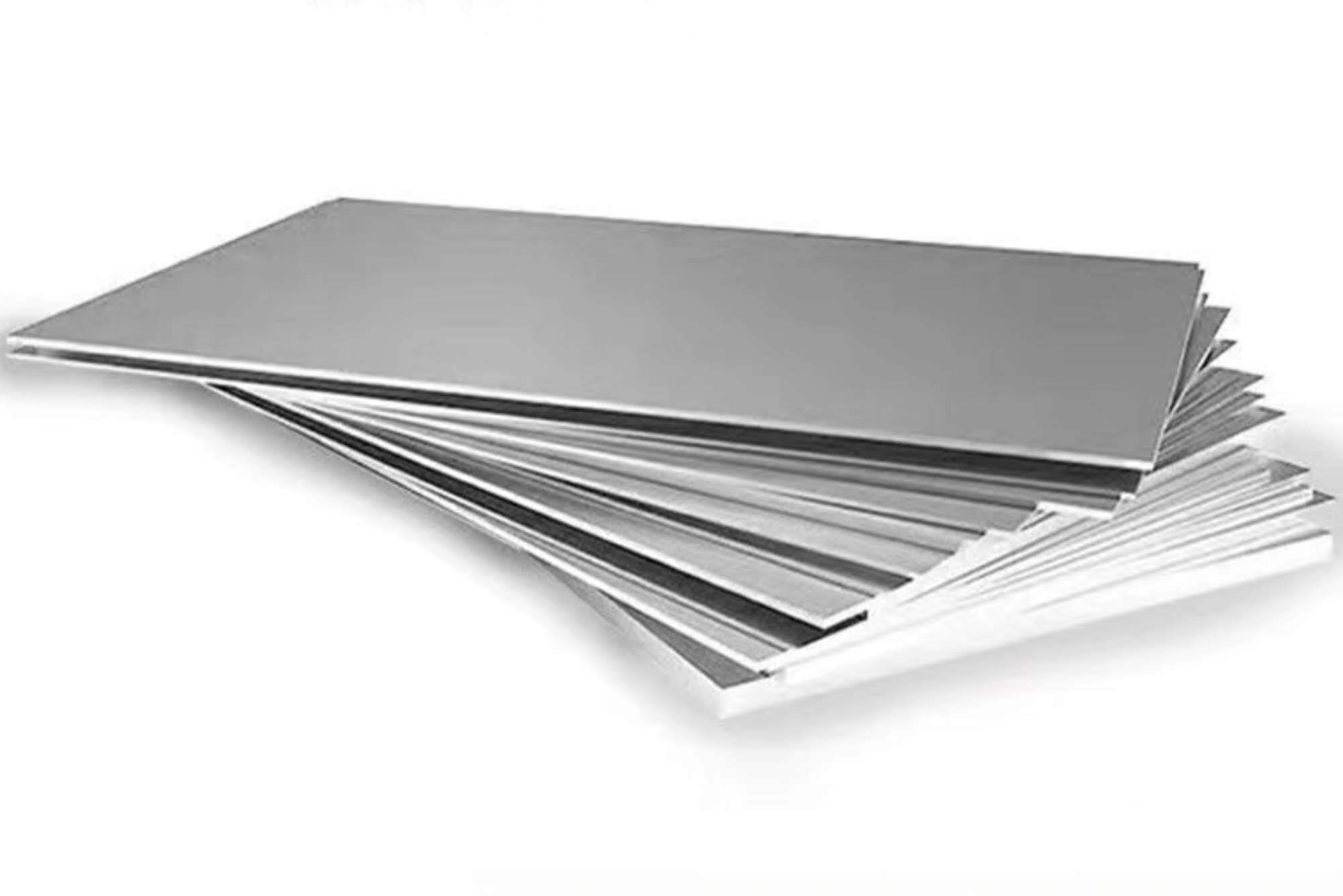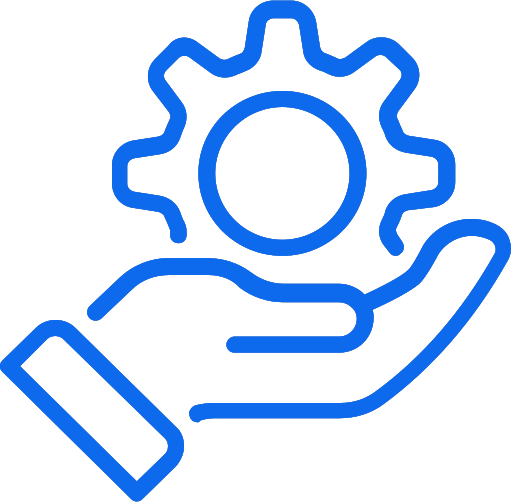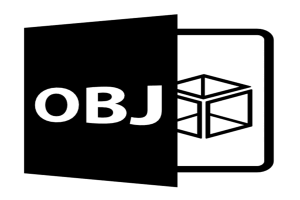When customizing metal parts through CNC machining, one of the most critical factors to consider is Gauge Size, a standardized measurement used to determine the thickness of sheet materials, wires, and tubes. Understanding gauge sizes and how they vary across countries is essential, especially when sourcing materials internationally. Each region, such as the USA, China, Germany, Japan, and Europe, has its own standards, making it important to know how to convert these measurements for your projects.
This guide provides a detailed explanation of gauge sizes, their effects on CNC machining processes, and a comprehensive comparison of gauge sizes across different regions for materials like steel, aluminum, copper, and plastic. By the end of this feature, you will have a clear understanding of how to select the correct gauge size to optimize your CNC machining projects.
What Are Gauge Sizes? How Do They Impact CNC Machining?
Gauge sizes are standardized units used to measure the thickness of materials such as sheet metal and wires. In most systems, a lower gauge number indicates a thicker material, while a higher gauge number represents a thinner material. However, these standards are not universal, and each country may have different measurement systems. For example, US Standard Gauge differs from the GB/T Standard in China or the DIN Standard in Germany.
Selecting the correct gauge size has a significant impact on the CNC machining process:
- Tool selection: Thicker materials require more robust cutting tools to prevent tool wear or breakage. Conversely, thinner materials need more precise tools to avoid deformation during machining.
- Cutting speeds and feed rates: Thicker materials require slower cutting speeds and lower feed rates to maintain precision and avoid tool damage, while thinner materials allow faster speeds but need careful control to avoid material warping.
- Machining strategies: Depending on the gauge size, machining strategies differ, such as the number of passes needed, the depth of cuts, and the level of tolerances required for precision.
CNC Machining Materials and Their Gauge Sizes by Country
In this section, we will outline how common CNC machining materials—such as steel, aluminum, copper, and plastic—are measured across different regions, including the USA, China, Germany, Japan, and Europe.
2.1 Steel Sheet Gauge Sizes
USA (US Standard Gauge):
| Gauge Size | Thickness (Inches) | Thickness (Millimeters) |
|---|---|---|
| 3 | 0.2391 | 6.073 |
| 4 | 0.2242 | 5.694 |
| 5 | 0.2092 | 5.314 |
| 6 | 0.1943 | 4.935 |
| 7 | 0.1793 | 4.554 |
| 8 | 0.1644 | 4.176 |
| 9 | 0.1495 | 3.797 |
| 10 | 0.1345 | 3.416 |
| 11 | 0.1196 | 3.038 |
| 12 | 0.1046 | 2.656 |
| 13 | 0.0897 | 2.278 |
| 14 | 0.0747 | 1.897 |
| 15 | 0.0673 | 1.709 |
| 16 | 0.0598 | 1.519 |
| 17 | 0.0538 | 1.367 |
| 18 | 0.0478 | 1.214 |
| 19 | 0.0418 | 1.062 |
| 20 | 0.0359 | 0.911 |
| 21 | 0.0329 | 0.836 |
| 22 | 0.0299 | 0.759 |
| 23 | 0.0269 | 0.683 |
| 24 | 0.0239 | 0.607 |
| 25 | 0.0209 | 0.531 |
| 26 | 0.0179 | 0.455 |
| 27 | 0.0164 | 0.417 |
| 28 | 0.0149 | 0.378 |
| 29 | 0.0135 | 0.343 |
| 30 | 0.0120 | 0.305 |
China (GB/T Standard):
| Gauge Size | Thickness (Inches) | Thickness (Millimeters) |
|---|---|---|
| 3 | 0.2447 | 6.215 |
| 4 | 0.2298 | 5.837 |
| 5 | 0.2148 | 5.457 |
| 6 | 0.1999 | 5.080 |
| 7 | 0.1849 | 4.699 |
| 8 | 0.1700 | 4.318 |
| 9 | 0.1550 | 3.937 |
| 10 | 0.1382 | 3.510 |
| 11 | 0.1250 | 3.175 |
| 12 | 0.1062 | 2.698 |
| 13 | 0.0913 | 2.319 |
| 14 | 0.0759 | 1.928 |
| 15 | 0.0707 | 1.796 |
| 16 | 0.0605 | 1.537 |
| 17 | 0.0555 | 1.410 |
| 18 | 0.0480 | 1.219 |
| 19 | 0.0425 | 1.080 |
| 20 | 0.0360 | 0.914 |
Germany (DIN Standard):
| Gauge Size | Thickness (Inches) | Thickness (Millimeters) |
|---|---|---|
| 3 | 0.2401 | 6.101 |
| 4 | 0.2252 | 5.722 |
| 5 | 0.2103 | 5.343 |
| 6 | 0.1954 | 4.964 |
| 7 | 0.1805 | 4.585 |
| 8 | 0.1656 | 4.206 |
| 9 | 0.1507 | 3.827 |
| 10 | 0.1380 | 3.505 |
| 11 | 0.1260 | 3.200 |
| 12 | 0.1060 | 2.692 |
| 13 | 0.0910 | 2.311 |
| 14 | 0.0755 | 1.918 |
| 15 | 0.0702 | 1.783 |
| 16 | 0.0598 | 1.519 |
| 17 | 0.0548 | 1.392 |
| 18 | 0.0479 | 1.217 |
| 19 | 0.0420 | 1.067 |
| 20 | 0.0365 | 0.927 |
Japan (JIS Standard):
| Gauge Size | Thickness (Inches) | Thickness (Millimeters) |
|---|---|---|
| 3 | 0.2413 | 6.127 |
| 4 | 0.2264 | 5.748 |
| 5 | 0.2114 | 5.370 |
| 6 | 0.1965 | 4.991 |
| 7 | 0.1816 | 4.612 |
| 8 | 0.1667 | 4.233 |
| 9 | 0.1518 | 3.854 |
| 10 | 0.1381 | 3.508 |
| 11 | 0.1250 | 3.175 |
| 12 | 0.1060 | 2.692 |
| 13 | 0.0910 | 2.311 |
| 14 | 0.0757 | 1.923 |
| 15 | 0.0705 | 1.791 |
| 16 | 0.0600 | 1.524 |
| 17 | 0.0550 | 1.397 |
| 18 | 0.0480 | 1.219 |
Europe (EN Standard):
| Gauge Size | Thickness (Inches) | Thickness (Millimeters) |
|---|---|---|
| 3 | 0.2375 | 6.033 |
| 4 | 0.2250 | 5.715 |
| 5 | 0.2100 | 5.334 |
| 6 | 0.1950 | 4.954 |
| 7 | 0.1800 | 4.572 |
| 8 | 0.1650 | 4.191 |
| 9 | 0.1500 | 3.810 |
| 10 | 0.1350 | 3.429 |
| 11 | 0.1200 | 3.048 |
| 12 | 0.1050 | 2.667 |
| 13 | 0.0900 | 2.286 |
| 14 | 0.0750 | 1.905 |
| 15 | 0.0700 | 1.778 |
| 16 | 0.0600 | 1.524 |
| 17 | 0.0550 | 1.397 |
| 18 | 0.0480 | 1.219 |
2.2 Aluminum Sheet Gauge Sizes
USA (US Standard Gauge):
| Gauge Size | Thickness (Inches) | Thickness (Millimeters) |
|---|---|---|
| 10 | 0.1019 | 2.588 |
| 12 | 0.0808 | 2.052 |
| 14 | 0.0641 | 1.628 |
| 16 | 0.0508 | 1.290 |
| 18 | 0.0403 | 1.024 |
| 20 | 0.0320 | 0.813 |
| 22 | 0.0253 | 0.643 |
| 24 | 0.0201 | 0.511 |
| 26 | 0.0159 | 0.404 |
| 28 | 0.0126 | 0.320 |
| 30 | 0.0100 | 0.254 |
China (GB/T Standard):
| Gauge Size | Thickness (Inches) | Thickness (Millimeters) |
|---|---|---|
| 10 | 0.1059 | 2.690 |
| 12 | 0.0838 | 2.129 |
| 14 | 0.0655 | 1.665 |
| 16 | 0.0515 | 1.308 |
| 18 | 0.0410 | 1.041 |
| 20 | 0.0325 | 0.826 |
| 22 | 0.0255 | 0.648 |
| 24 | 0.0205 | 0.521 |
| 26 | 0.0161 | 0.409 |
| 28 | 0.0128 | 0.325 |
| 30 | 0.0102 | 0.259 |
Germany (DIN Standard):
| Gauge Size | Thickness (Inches) | Thickness (Millimeters) |
|---|---|---|
| 10 | 0.1016 | 2.581 |
| 12 | 0.0812 | 2.062 |
| 14 | 0.0635 | 1.613 |
| 16 | 0.0504 | 1.281 |
| 18 | 0.0400 | 1.016 |
| 20 | 0.0320 | 0.813 |
| 22 | 0.0254 | 0.645 |
| 24 | 0.0201 | 0.511 |
| 26 | 0.0160 | 0.406 |
| 28 | 0.0126 | 0.320 |
| 30 | 0.0100 | 0.254 |
Japan (JIS Standard):
| Gauge Size | Thickness (Inches) | Thickness (Millimeters) |
|---|---|---|
| 10 | 0.1015 | 2.579 |
| 12 | 0.0810 | 2.057 |
| 14 | 0.0630 | 1.600 |
| 16 | 0.0500 | 1.270 |
| 18 | 0.0402 | 1.021 |
| 20 | 0.0320 | 0.813 |
| 22 | 0.0253 | 0.643 |
| 24 | 0.0200 | 0.508 |
| 26 | 0.0160 | 0.406 |
| 28 | 0.0128 | 0.325 |
| 30 | 0.0100 | 0.254 |
Europe (EN Standard):
| Gauge Size | Thickness (Inches) | Thickness (Millimeters) |
|---|---|---|
| 10 | 0.1020 | 2.590 |
| 12 | 0.0819 | 2.080 |
| 14 | 0.0644 | 1.636 |
| 16 | 0.0512 | 1.300 |
| 18 | 0.0408 | 1.040 |
| 20 | 0.0325 | 0.826 |
| 22 | 0.0254 | 0.645 |
| 24 | 0.0200 | 0.508 |
| 26 | 0.0160 | 0.406 |
| 28 | 0.0128 | 0.325 |
| 30 | 0.0102 | 0.259 |
2.3 Copper Sheet Gauge Sizes
USA (US Standard Gauge):
| Gauge Size | Thickness (Inches) | Thickness (Millimeters) |
|---|---|---|
| 8 | 0.1285 | 3.264 |
| 10 | 0.1020 | 2.588 |
| 12 | 0.0808 | 2.052 |
| 14 | 0.0641 | 1.628 |
| 16 | 0.0508 | 1.290 |
| 18 | 0.0403 | 1.024 |
| 20 | 0.0320 | 0.813 |
| 22 | 0.0253 | 0.643 |
| 24 | 0.0201 | 0.511 |
| 26 | 0.0159 | 0.404 |
| 28 | 0.0126 | 0.320 |
| 30 | 0.0100 | 0.254 |
China (GB/T Standard):
| Gauge Size | Thickness (Inches) | Thickness (Millimeters) |
|---|---|---|
| 8 | 0.1300 | 3.302 |
| 10 | 0.1030 | 2.616 |
| 12 | 0.0819 | 2.080 |
| 14 | 0.0650 | 1.651 |
| 16 | 0.0508 | 1.290 |
| 18 | 0.0410 | 1.041 |
| 20 | 0.0325 | 0.826 |
| 22 | 0.0255 | 0.648 |
| 24 | 0.0205 | 0.521 |
| 26 | 0.0161 | 0.409 |
| 28 | 0.0128 | 0.325 |
| 30 | 0.0102 | 0.259 |
Germany (DIN Standard):
| Gauge Size | Thickness (Inches) | Thickness (Millimeters) |
|---|---|---|
| 8 | 0.1280 | 3.251 |
| 10 | 0.1016 | 2.581 |
| 12 | 0.0808 | 2.052 |
| 14 | 0.0635 | 1.613 |
| 16 | 0.0508 | 1.290 |
| 18 | 0.0400 | 1.016 |
| 20 | 0.0320 | 0.813 |
| 22 | 0.0254 | 0.645 |
| 24 | 0.0200 | 0.508 |
| 26 | 0.0160 | 0.406 |
| 28 | 0.0126 | 0.320 |
| 30 | 0.0100 | 0.254 |
Japan (JIS Standard):
| Gauge Size | Thickness (Inches) | Thickness (Millimeters) |
|---|---|---|
| 8 | 0.1285 | 3.264 |
| 10 | 0.1020 | 2.588 |
| 12 | 0.0808 | 2.052 |
| 14 | 0.0641 | 1.628 |
| 16 | 0.0508 | 1.290 |
| 18 | 0.0403 | 1.024 |
| 20 | 0.0320 | 0.813 |
| 22 | 0.0253 | 0.643 |
| 24 | 0.0201 | 0.511 |
| 26 | 0.0159 | 0.404 |
| 28 | 0.0126 | 0.320 |
| 30 | 0.0100 | 0.254 |
Europe (EN Standard):
| Gauge Size | Thickness (Inches) | Thickness (Millimeters) |
|---|---|---|
| 8 | 0.1283 | 3.258 |
| 10 | 0.1020 | 2.590 |
| 12 | 0.0809 | 2.055 |
| 14 | 0.0636 | 1.616 |
| 16 | 0.0509 | 1.294 |
| 18 | 0.0408 | 1.036 |
| 20 | 0.0320 | 0.813 |
| 22 | 0.0253 | 0.643 |
| 24 | 0.0201 | 0.511 |
| 26 | 0.0159 | 0.404 |
| 28 | 0.0128 | 0.325 |
| 30 | 0.0100 | 0.254 |
2.4 Plastic Sheet Thickness Comparison
Plastic materials are widely used in CNC machining. Although plastics do not follow strict gauge standards like metals, their thickness is still crucial for the machining process. Plastics are typically measured by thickness in inches or millimeters. Below is a typical thickness chart for plastics used in CNC machining, covering different national standards.
USA (Custom Thicknesses):
| Thickness (Inches) | Thickness (Millimeters) |
|---|---|
| 0.005 | 0.127 |
| 0.010 | 0.254 |
| 0.020 | 0.508 |
| 0.030 | 0.762 |
| 0.040 | 1.016 |
| 0.060 | 1.524 |
| 0.080 | 2.032 |
| 0.100 | 2.540 |
| 0.120 | 3.048 |
| 0.250 | 6.350 |
China (GB/T Standard):
| Thickness (Inches) | Thickness (Millimeters) |
|---|---|
| 0.006 | 0.152 |
| 0.012 | 0.305 |
| 0.024 | 0.610 |
| 0.036 | 0.914 |
| 0.048 | 1.219 |
| 0.072 | 1.829 |
| 0.096 | 2.438 |
| 0.125 | 3.175 |
| 0.250 | 6.350 |
Germany (DIN Standard):
| Thickness (Inches) | Thickness (Millimeters) |
|---|---|
| 0.005 | 0.127 |
| 0.010 | 0.254 |
| 0.020 | 0.508 |
| 0.030 | 0.762 |
| 0.040 | 1.016 |
| 0.060 | 1.524 |
| 0.080 | 2.032 |
| 0.100 | 2.540 |
| 0.120 | 3.048 |
| 0.250 | 6.350 |
Japan (JIS Standard):
| Thickness (Inches) | Thickness (Millimeters) |
|---|---|
| 0.006 | 0.152 |
| 0.012 | 0.305 |
| 0.024 | 0.610 |
| 0.036 | 0.914 |
| 0.048 | 1.219 |
| 0.072 | 1.829 |
| 0.096 | 2.438 |
| 0.125 | 3.175 |
| 0.250 | 6.350 |
Europe (EN Standard):
| Thickness (Inches) | Thickness (Millimeters) |
|---|---|
| 0.006 | 0.152 |
| 0.012 | 0.305 |
| 0.024 | 0.610 |
| 0.036 | 0.914 |
| 0.048 | 1.219 |
| 0.072 | 1.829 |
| 0.096 | 2.438 |
| 0.125 | 3.175 |
| 0.250 | 6.350 |
How Different Gauge Sizes Impact CNC Machining Processes
Gauge size plays a crucial role in how materials behave during the CNC machining process. Understanding these effects is key to optimizing the machining strategy for different material types.
3.1 Tool Selection Based on Gauge Size
Thicker materials (lower gauge numbers) require stronger, more durable tools to cut through effectively, while thinner materials (higher gauge numbers) demand more precise tools to avoid deformation. For example, using carbide tools for thicker steel sheets or high-speed steel (HSS) tools for thinner aluminum can optimize the cutting process.
3.2 Cutting Speeds and Feed Rates for Different Gauges
The thickness of the material directly affects the cutting speed and feed rate settings on a CNC machine. Thicker materials require slower cutting speeds and lower feed rates to prevent tool wear and maintain precision. Thinner materials can be machined faster but require more control to prevent warping or bending.
3.3 Machining Strategy Adjustments Based on Gauge Size
For thicker materials, multiple passes are often needed, along with deeper cuts and slower tool paths. Thinner materials allow for shallower cuts, faster speeds, and tighter tolerances. The choice of gauge size impacts the overall efficiency and quality of the final product.
Comprehensive Table: Material Gauge Sizes by Country
Below is a comprehensive table comparing gauge sizes for various materials (steel, aluminum, copper, and plastic) across the USA, China, Germany, Japan, and Europe. This table serves as a quick reference guide for selecting materials for CNC machining projects, ensuring accuracy when working with international suppliers.
| Material | USA Gauge Size (Inches) | China Gauge Size (Inches) | Germany Gauge Size (Inches) | Japan Gauge Size (Inches) | Europe Gauge Size (Inches) |
|---|---|---|---|---|---|
| Steel | 0.2391 – 0.0120 | 0.2447 – 0.0121 | 0.2401 – 0.0120 | 0.2413 – 0.0120 | 0.2375 – 0.0120 |
| Aluminum | 0.1019 – 0.0100 | 0.1059 – 0.0102 | 0.1016 – 0.0100 | 0.1015 – 0.0100 | 0.1020 – 0.0102 |
| Copper | 0.1285 – 0.0100 | 0.1300 – 0.0102 | 0.1280 – 0.0100 | 0.1285 – 0.0100 | 0.1283 – 0.0100 |
| Plastic | 0.005 – 0.250 | 0.006 – 0.250 | 0.005 – 0.250 | 0.006 – 0.250 | 0.006 – 0.250 |
How to Optimize CNC Custom Parts Using Gauge Size Standards
Optimizing CNC custom parts by selecting the correct gauge size ensures efficient material usage, reduces waste, and meets performance requirements. Below are several strategies for optimizing custom CNC parts based on gauge size.
5.1 Choose the Right Gauge Size for Specific Applications
Different applications require specific gauge sizes to balance performance, weight, and cost. For example:
- Aerospace Industry: Lightweight parts use high-gauge aluminum for reduced weight without compromising strength.
- Automotive Industry: Thick, low-gauge steel is required for components like chassis to provide strength and durability.
- Electronics Industry: Thin-gauge copper is ideal for heat sinks, maximizing thermal conductivity while maintaining compact dimensions.
5.2 Optimize Material Usage and Reduce Waste
Choosing the correct gauge size for your material can significantly reduce waste during the CNC machining process. For example, selecting a thickness close to the final part’s requirements avoids unnecessary removal of excess material.
5.3 Balance Cost and Performance
Thicker materials generally cost more and take longer to machine, while thinner materials are less expensive and can be machined more quickly. By selecting the appropriate gauge size, you can strike a balance between material cost, machining time, and the final part’s performance requirements.
Industry Case Studies: CNC Machining of Parts with Specific Gauge Sizes
In this section, we’ll examine real-world case studies from various industries, demonstrating how selecting the correct gauge size can improve efficiency, reduce costs, and enhance product performance.
6.1 Aerospace Industry – Aluminum Components
A client in the aerospace industry required lightweight yet durable aluminum components for an aircraft. The parts needed to balance strength and weight to optimize fuel efficiency.
Gauge Size Selection: 20-gauge aluminum (0.0320 inches or 0.813 mm) was selected for its strength-to-weight ratio.
Result: The lightweight components significantly reduced the aircraft’s overall weight, improving fuel efficiency without compromising structural integrity.
6.2 Automotive Industry – Steel Chassis Components
An automotive manufacturer required steel components for a truck’s chassis, which needed to withstand heavy loads and harsh conditions.
Gauge Size Selection: 14-gauge steel (0.0747 inches or 1.897 mm) was chosen for its durability.
Result: The components provided the necessary strength and durability while minimizing material costs.
6.3 Electronics Industry – Copper Heat Sinks
A client in the electronics industry needed custom copper heat sinks for a high-performance server. The heat sinks needed to maximize heat dissipation while fitting into a compact space.
Gauge Size Selection:18-gauge copper (0.0403 inches or 1.024 mm) was selected for its excellent thermal conductivity.
Result: The custom copper heat sinks improved the server’s cooling efficiency, enhancing overall performance.
Conclusion
Gauge sizes play a critical role in determining material thickness, machining parameters, and the overall performance of CNC machining projects. By understanding the different gauge size standards across regions such as the USA, China, Germany, Japan, and Europe, manufacturers and engineers can make informed decisions when selecting materials. This guide serves as a comprehensive resource, providing the tools needed to optimize your CNC projects, whether you’re sourcing materials locally or internationally.
FAQ
This FAQ section addresses common questions related to gauge sizes and CNC machining.
7.1 What is the best gauge size for CNC machining aluminum parts?
The best gauge size for aluminum parts depends on the application. For lightweight, strong parts, 20-gauge aluminum is often a good choice.
7.2 How do I select the correct gauge size for my CNC project?
Gauge size should be selected based on the part’s performance requirements, material strength, and cost considerations.
7.3 How does gauge size affect CNC machining tolerances?
Thinner materials require tighter tolerances as they are more prone to deformation. Thicker materials are more forgiving but require robust tools.
7.4 What are the differences in gauge size standards between countries?
Gauge size standards vary by country, with different systems used in the USA, China, Germany, Japan, and Europe. Refer to conversion charts to avoid confusion.
7.5 Can CNC machines handle very thin gauge materials?
Yes, but thin materials require precise control of cutting speeds and feed rates to prevent warping or bending during machining.
Other Articles You Might Enjoy
- Custom Precision CNC Machining Services for Bronze Parts
Introduction to CNC machining and Bronze Parts Manufacturing Custom precision Computer Numerical Control (CNC) machining is a unique technology that employs computerized controls and machine tools to eradicate layers of…
- Nylon CNC Machining Service for Custom Parts
Nylon is an engineering plastic known for its high strength, wear resistance, and chemical inertness. It possesses excellent mechanical properties and durability, making it widely used in various fields including…
- Requirements for CNC Machining Parts
Preparation Work Complete the necessary preparation before machining, including process analysis, process route design, tool and fixture selection, and program compilation. online cnc machining service Operating Steps and Contents Start…
- Aluminum CNC Machining Service for Custom Parts
Aluminum CNC machining stands at the forefront of modern manufacturing, epitomizing precision, versatility, and efficiency. With its widespread applications across industries ranging from aerospace to automotive and beyond, aluminum CNC…
- 10 Advantages of CNC Machining for Custom Parts
CNC machining services produce high-quality parts with accuracy and efficient production. These CNC machines use computer numerical control machining tools to cut and shape materials precisely. Additionally, CNC machining services…
- Face Milling Essentials for CNC Machining Parts
Face milling is an essential operation in CNC machining, aimed at controlling the height of the workpiece and ensuring a smooth surface finish. This process often uses multi-tooth cutters, known…






